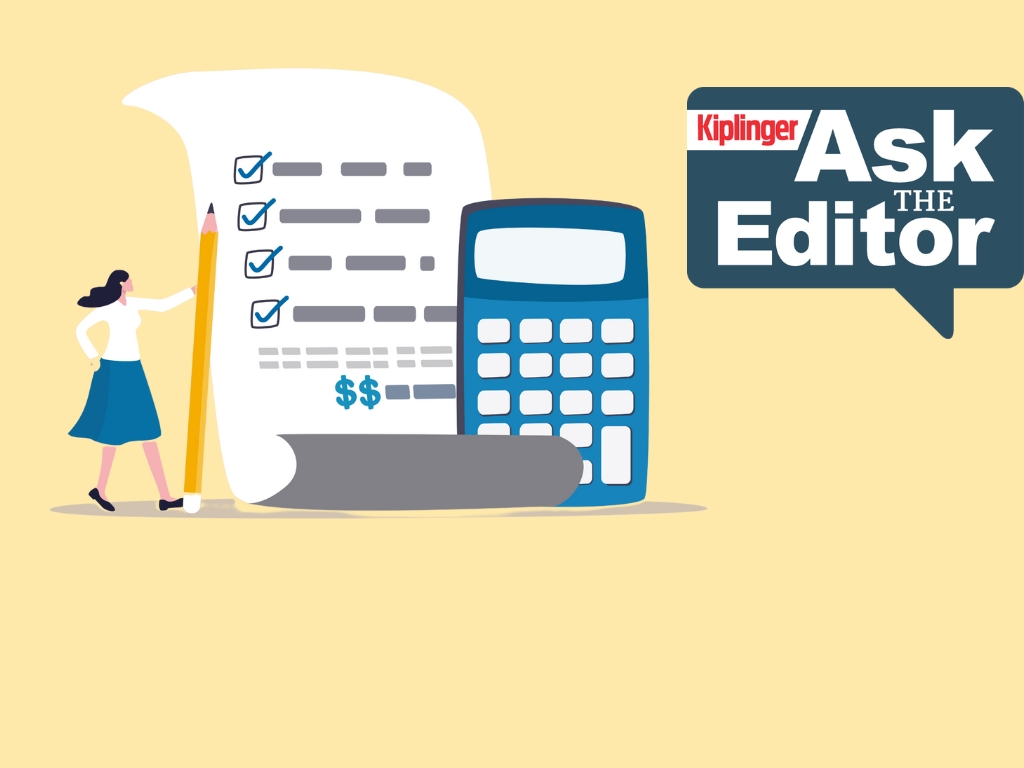Energy-Efficiency Credits — Get’ Em While You Can
Green energy-efficiency credits are on the chopping block. If you want some of these valuable tax credits, you'll need to upgrade your home sooner rather than later.


If you are mulling installing solar panels on your roof or making other energy-efficient improvements to your home, you may want to act quickly to take advantage of one of two federal income tax credits. First, is the residential clean energy property credit for homeowners who install a power system that uses solar or other renewable energy. Second, is the energy-efficient home improvement credit for homeowners who make smaller energy-saving purchases for their homes.
How long these two credits — which reduce the taxes you owe dollar for dollar — will remain on the books, and what, if any, changes will be made, are currently open questions. On May 22, the House passed its One Big Beautiful Bill that would extend the tax changes in the 2017 Tax Cuts and Jobs Act that automatically expire at the end of 2025. The bill also provides lots of other tax breaks.
The House's One Big Beautiful Bill would also scale back many of the green energy tax credits that were created, expanded or renewed in the 2022 Inflation Reduction Act., including the home energy savings tax credits. Specifically, the bill would repeal the residential clean energy property credit and the energy efficient home improvement credit, effective for property placed in service after 2025.
From just $107.88 $24.99 for Kiplinger Personal Finance
Become a smarter, better informed investor. Subscribe from just $107.88 $24.99, plus get up to 4 Special Issues

Sign up for Kiplinger’s Free Newsletters
Profit and prosper with the best of expert advice on investing, taxes, retirement, personal finance and more - straight to your e-mail.
Profit and prosper with the best of expert advice - straight to your e-mail.
Now it's the Senate's turn. The odds are good that Congress will pass a tax package sometime this summer, despite a series of hurdles that lawmakers will have to overcome. However, the Senate will make some changes to the bill, including possible revisions to the green energy tax credits.
Since homeowners may claim a home energy credit only for the year the improvements are made, if you’re thinking of making any energy-saving upgrades, you’ll want to pay for them and get them completed before December 31 to ensure a tax credit. They should be claimed using IRS Form 5695.
The residential clean energy property credit
This tax break is for homeowners who install an alternative energy system that relies on a renewable energy source, such as solar, wind, geothermal, or fuel cell or battery storage technology. Think solar panels, solar-powered water heaters, geothermal heat pumps, wind turbines, fuel cells, etc. The credit equals 30% of the cost of materials and installation or systems that you install in your home. There is no maximum credit dollar limit for solar, geothermal, wind, or battery storage systems. But for fuel cells, the credit is capped at $500 for each half-kilowatt of power capacity.
Unused residential clean energy property credits can be carried forward to reduce tax owed in future years. Homeowners who install a renewable energy system sometimes qualify for a rebate. These rebates are nontaxable, but they reduce the system’s cost for figuring the credit.
The energy efficient home improvement credit
The basic credit is 30% of the cost and installation of certain types of insulation, boilers, central air-conditioning systems, water heaters, heat pumps, exterior doors and windows, etc., that you install in a home. These items must also meet certain energy-efficiency requirements, depending on the product. There is a $1,200 general aggregate yearly credit limit. But many specific upgrades have lower monetary credit limits and others have higher ones.
Here are the item-by-item yearly caps: $150 for a home-energy audit; $500 in aggregate for exterior doors (a maximum of $250 per door); $600 for exterior windows or skylights, and $600 for natural gas, propane or oil water heaters, electric panels, central air conditioners, or natural gas, propane or oil furnaces or hot water boilers. And $2,000 for biomass stoves or biomass boilers, electric or natural gas heat pump water heaters, or electric or natural gas heat pumps. Unlike the residential clean energy property credit, you cannot carry forward any unused energy-efficient home improvement credits to future years.
As an example, let’s say that in 2025, you purchase and install in your home two exterior doors at a cost of $1,000 each, windows and skylights at a total cost of $2,200, and a $6,000 central air conditioner. Your 2025 tax credit amount is $1,200. Now, change the facts. In 2025, you purchase and install in your home a natural gas heat pump that costs $7,000, a $4,000 natural gas tankless water heater, and a $6,000 central air conditioner. Your total maximum credit is $3,200: $2,000 for the heat pump. $600 for the water heater and $600 for the air conditioner.
For more on these credits and the documentation they require, read Tax Credits for Energy-Efficiency Home Improvement in 2025.
Note: This item first appeared in Kiplinger Retirement Report, our popular monthly periodical that covers key concerns of affluent older Americans who are retired or preparing for retirement. Subscribe for retirement advice that’s right on the money.
Related content
Profit and prosper with the best of Kiplinger's advice on investing, taxes, retirement, personal finance and much more. Delivered daily. Enter your email in the box and click Sign Me Up.

Joy is an experienced CPA and tax attorney with an L.L.M. in Taxation from New York University School of Law. After many years working for big law and accounting firms, Joy saw the light and now puts her education, legal experience and in-depth knowledge of federal tax law to use writing for Kiplinger. She writes and edits The Kiplinger Tax Letter and contributes federal tax and retirement stories to kiplinger.com and Kiplinger’s Retirement Report. Her articles have been picked up by the Washington Post and other media outlets. Joy has also appeared as a tax expert in newspapers, on television and on radio discussing federal tax developments.
-
 3 Ways to Stretch the 2026 Social Security COLA For Your Budget
3 Ways to Stretch the 2026 Social Security COLA For Your BudgetThree steps retirees can take to stretch the Social Security COLA to fit their budgets.
-
 How to Keep Your Charitable Giving Momentum Going All Year
How to Keep Your Charitable Giving Momentum Going All YearInstead of treating charity like a year-end rush for tax breaks, consider using smart tools like DAFs and recurring grants for maximum impact all the year.
-
 Uber Takes Aim at the Bottom Lines of Billboard Lawyers
Uber Takes Aim at the Bottom Lines of Billboard LawyersUber has filed lawsuits and proposed a ballot initiative, in California, to curb settlements it claims are falsely inflated by some personal injury lawyers.
-
 11 Cities With the Cheapest Groceries in the US
11 Cities With the Cheapest Groceries in the USIf you live in one of these 11 cities, you're paying less than the rest of the country to keep your fridge stocked.
-
 I'm a Cross-Border Financial Adviser: 5 Things I Wish Americans Knew About Taxes Before Moving to Portugal
I'm a Cross-Border Financial Adviser: 5 Things I Wish Americans Knew About Taxes Before Moving to PortugalMoving to Portugal might not be the clean financial break you expect due to U.S. tax obligations, foreign investment risks, lower investment yields and more.
-
 Show of Hands: Who Hates Taxes? The Best Time to Plan for Them Is Right Now
Show of Hands: Who Hates Taxes? The Best Time to Plan for Them Is Right NowBy creating a tax plan, you can keep more of what you've earned and give less to Uncle Sam. Here's how you can follow the rules and pay only your fair share.
-
 'Smart' Estate Planning Can Cause Huge Problems: An Expert Unravels Popular Myths
'Smart' Estate Planning Can Cause Huge Problems: An Expert Unravels Popular MythsSometimes no plan at all could be better than making these unfortunate mistakes. Don't let your best intentions mess things up for your heirs.
-
 Ask the Editor, November 28: Roth Conversions and Tax Planning
Ask the Editor, November 28: Roth Conversions and Tax PlanningAsk the Editor In this week's Ask the Editor Q&A, Joy Taylor answers questions on how to convert a traditional IRA to a Roth IRA.
-
 I'm a Wealth Adviser: Here's How to Maximize Your Generosity Before the OBBB's 2026 Cap Kicks In
I'm a Wealth Adviser: Here's How to Maximize Your Generosity Before the OBBB's 2026 Cap Kicks InWith the OBBB set to dramatically change charitable tax deductions in 2026, donors might want to consolidate gifts into 2025 to lock in current tax benefits.
-
 I'm a Wealth Planner: These 3 Steps Can See You and Your Heirs Through a Wealth Transfer
I'm a Wealth Planner: These 3 Steps Can See You and Your Heirs Through a Wealth TransferBoth givers and receivers need to be seriously strategic about communicating, understanding tax efficiency and leveraging smart money moves.
-
 My $1.2 Million Vacation Home Has a $360K Mortgage. I Don't Need My Upcoming $45K RMD. Should I Use It to Pay Down the Mortgage?
My $1.2 Million Vacation Home Has a $360K Mortgage. I Don't Need My Upcoming $45K RMD. Should I Use It to Pay Down the Mortgage?We asked wealth planners for advice.